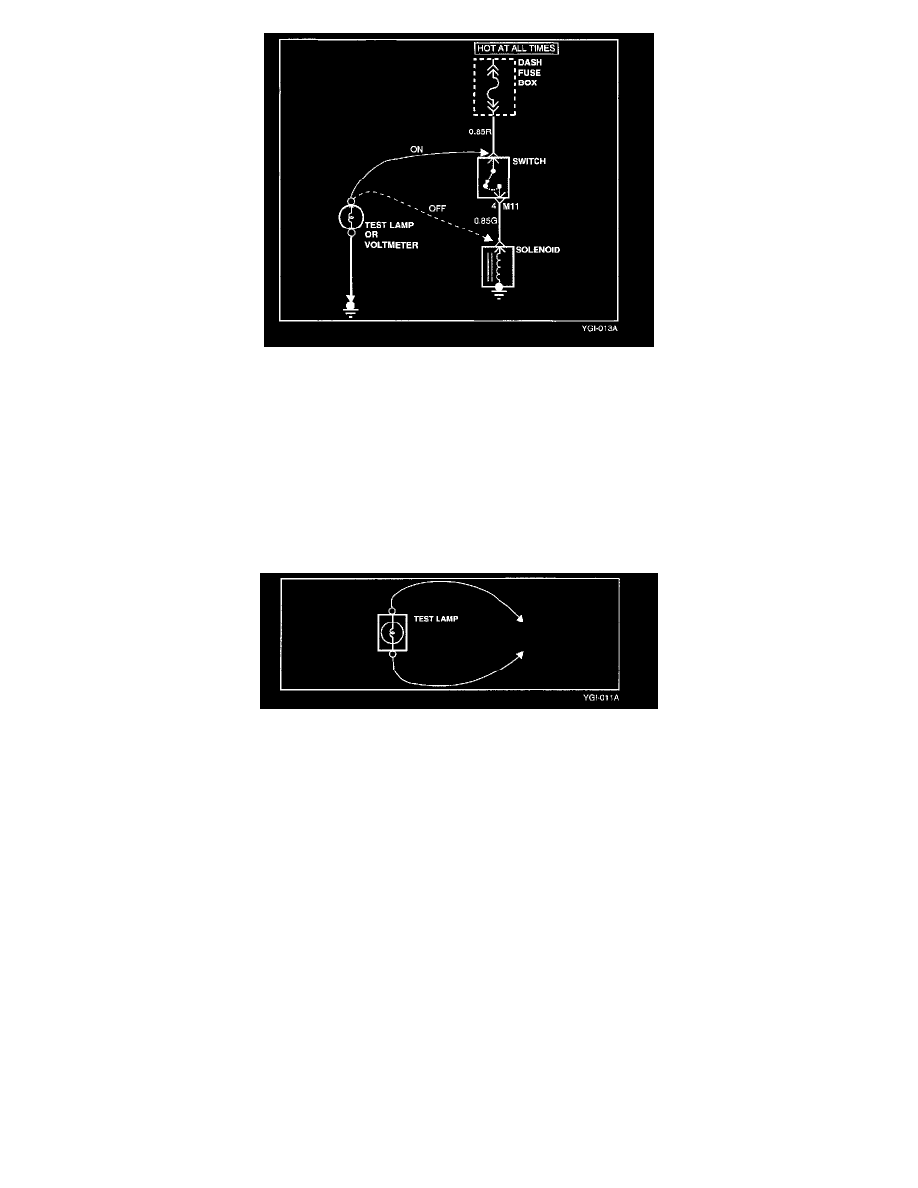Sonata GLS V6-2.5L (2000)

This test measures voltage in a circuit. When testing for voltage at a connector, you do not have to separate the two halves of the connector Instead,
probe the connector from the back (backprobe). Always check both sides of the connector because dirt and corrosion between its contact surfaces can
cause electrical problems.
1. Connect one lead of a test lamp or voltmeter to a ground. If you are using a voltmeter, be sure it is the voltmeter's negative test lead you have
connected to ground.
2. Connect the other lead of the test lamp or voltmeter to a selected test point (connector or terminal).
3. If the test lamp glows, there is voltage present. If you are using a voltmeter, note the voltage reading. Too close a loss of more than 1 volt from
specification indicates a problem.
Voltmeter and Test Lamp
Use a test lamp or a voltmeter on circuits without solid-state units and use a test lamp to check for voltage. A test lamp is made up of a 12-volt light bulb
with a pair of leads attached. After grounding one lead, touch the other lead to various points along the circuit where voltage should be present. When the
bulb goes on, there is voltage at the point being tested.
CAUTION: A number of circuits include solid-state modules, such as the Engine Control Module (ECM), used with computer command control
injection. Voltage in these circuits should be tested only with a 10-megaohm or higher impedance digital voltmeter. Never use a test lamp on circuits
that contain solid-state modules. Damage to the modules may result.
A voltmeter can be used in place of a test lamp. While a test lamp shows whether the voltage is present or not, a voltmeter indicates how much voltage is
present.
